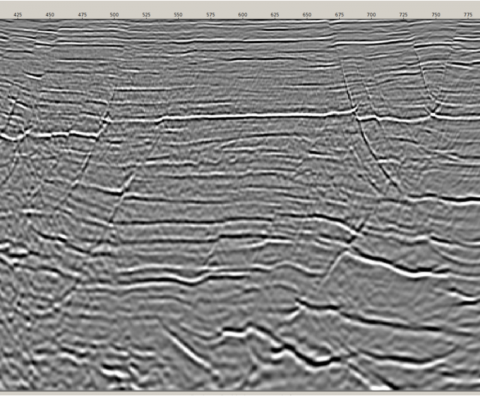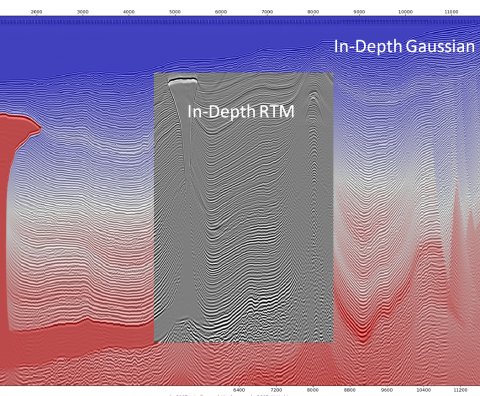Our fast Gaussian Beam is perfect for building velocity models quickly and thoroughly. Where Kirchhoff fails to properly image high dip angle sediment and salt flanks, Gaussian Beam naturally handles turning rays and multipathing with superb imaging results.
While Kirchhoff has been outstanding in seismic processing and remains the most versatile imaging tool in dealing with various seismic acquisitions, it also sacrifices amplitude fidelity caused by multipathing and diving energy. Fortunately, Gaussian Beam is immune to both these defects. Plus, if coded well, Gaussian Beam runs dozens of times faster than Kirchhoff, making it an excellent candidate for Interactive Imaging (aka localized imaging or scenario testing). In general, the quality of Gaussian Beam ranks somewhere between Kirchhoff and RTM.

Gaussian Beam can migrate large dips and still produce desirable amplitudes. Below we show an impulse response which clearly demonstrates excellent amplitudes and large dip capacity. This has been the key to our success when tackling Fault Shadow problems and Salt Model Building, both onshore and offshore.
Kirchhoff Gathers have been widely used to feed Tomography. However, Gaussian Beam Gathers have more accurate and dependable amplitudes than Kirchhoff Gathers. Because of this advantage, Gaussian Beam is better suited for tackling fault shadow problems. In-Depth’s proprietary Gaussian Beam/Fault Constrained Tomo/High Resolution RTM has been developed to solve fault-shadow problems.
To test strong elevation, Foothill shot data has been used to test In-Depth’s Beam migration. Above is a good match to the velocity model, handling complicated datum. In general, the large dips have been better imaged with Beam than Kirchhoff.

TTI and VTI Gaussian Beams are very cost-effective for imaging steep dips around salt structures, producing inexpensive and high quality gathers for velocity updating. It is suitable for single-azimuth, multi-azimuth, and full azimuth data, and works extremely well for both land
and marine data.
